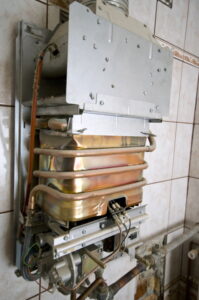Electric furnaces are a common option for heating in Florida. In regions with colder winters, electric furnaces can become costly to operate and they don’t have the heat capacity and heating speed of using a gas-powered furnace. In our short and mild winters, however, electric furnaces are cost-effective and just plain effective. For homes that don’t have a connection to a gas main, using an electric furnace in Newberry, FL is an excellent option for winter heat.
If you’d like to know more about electric furnaces and how they operate, we’re glad to share our knowledge with you.
Imagine a Big Toaster Connected to a Fan
Yes, that’s an oversimplification, but it does help you start to visualize the basic operation of an electric furnace. Toasters and electric furnaces both generate heat in the same way: electrical resistance. This is what occurs when an electric current is sent through metal conduits. The metal’s resistance to the electric current causes the metal to heat up. Just think of your toaster: it contains thin metal strips that turn red hot whenever you activate it, and the heat radiates from these strips to warm the toast.
With an electric furnace, the current from the home’s electric system enters a series of heating elements (usually from three to six) that convert the electrical power into heat energy. Heating elements are made of metal wires arranged into coils to create the maximum surface area to radiate heat.
The Heating Cycle in an Electric Furnace
An electric furnace has a heating cycle that manages the blower and the heating elements to provide the right level of heating without creating damaging electrical spikes. When the thermostat sends a request for heating, a circuit opens to allow electricity to move to the heating elements. However, electricity doesn’t go to all the heating elements at once, which could potentially overload the circuit. Instead, the current moves into a component called the sequencer, which staggers turning on the heating elements. As each heating element reaches its maximum heat, the sequencer allows the current to move to the next heating element.
When an internal temperature sensor, known as the limit controller, registers that the heating elements are hot enough, it then activates the blower fan. The fan pushes air through a heat exchanger that transfers the heat directly from the heating elements into the air. The now heated air travels into the ductwork and to the rooms.
When the thermostat signals the house has warmed up to the target temperature, it signals to the furnace to shut off the heating elements. The blower fan continues to run to help remove heat from the elements. When the elements have cooled down, the limit controller then shuts off the blower fan. The limit controller will also shut down the furnace in case the heating elements overheat.
Although this might sound much simpler than a gas furnace, an electric furnace still requires professionals to install as well as maintain and repair it. If you need assistance with an electric furnace, make sure you contact our experts to help you.

